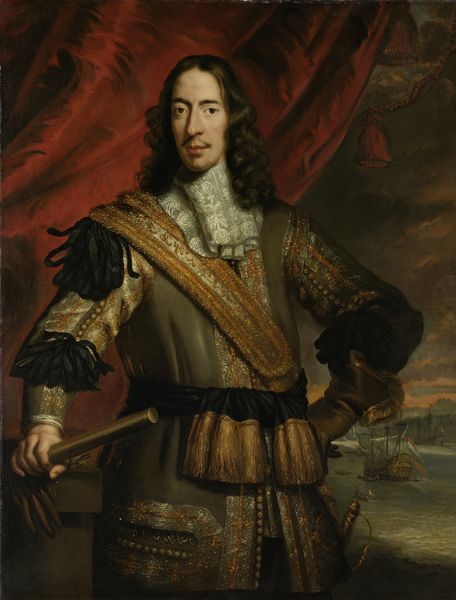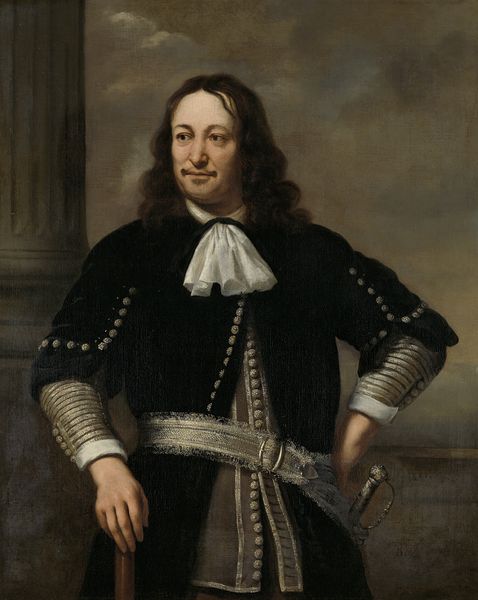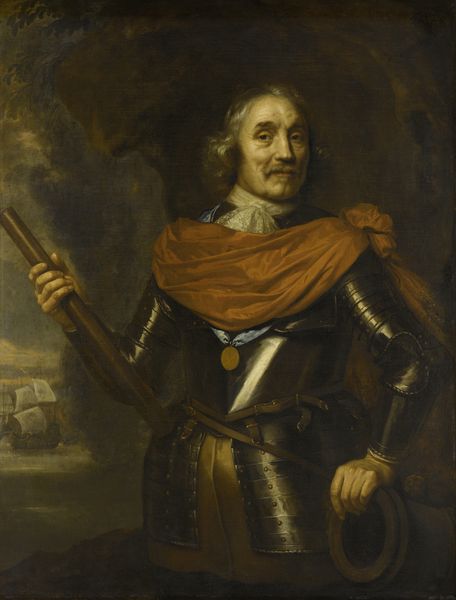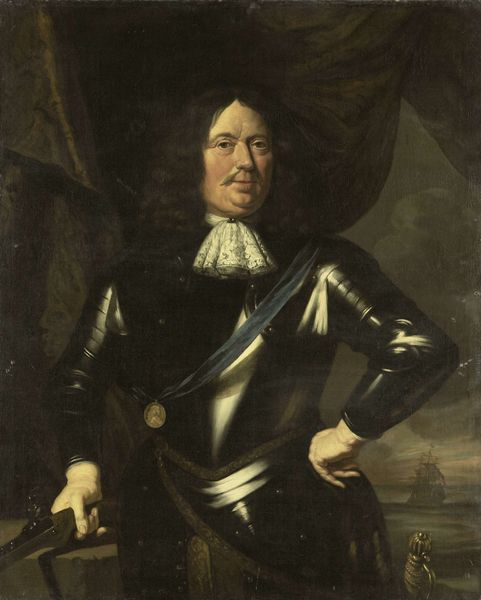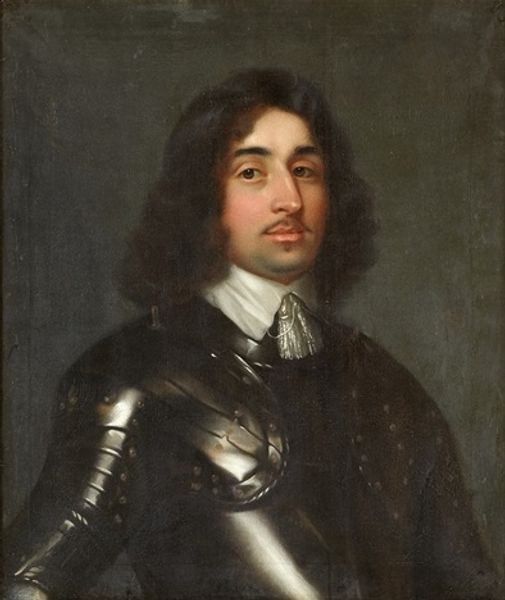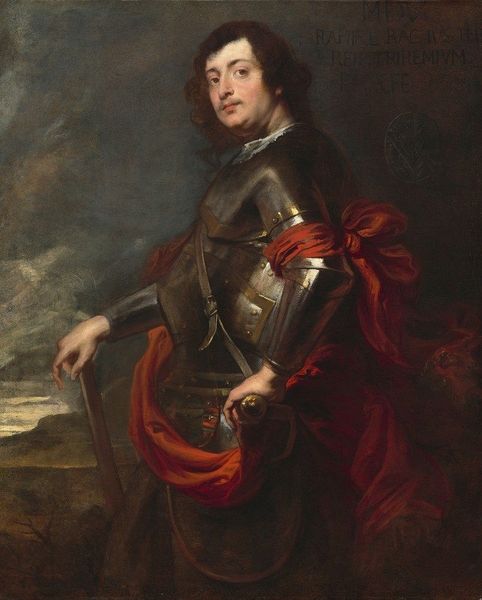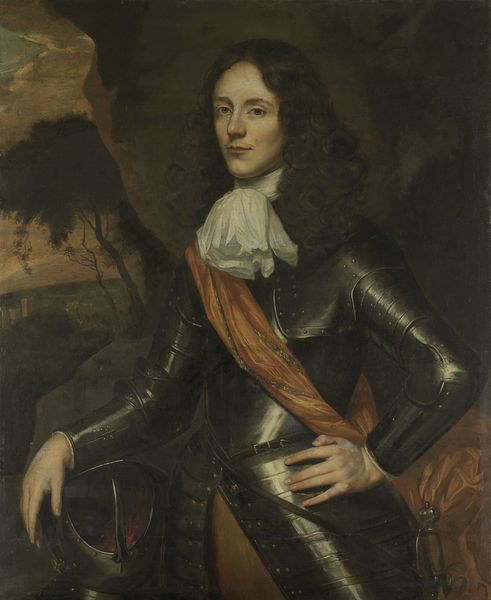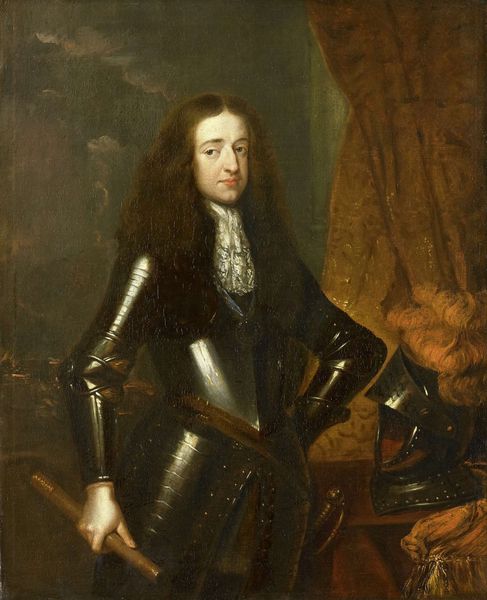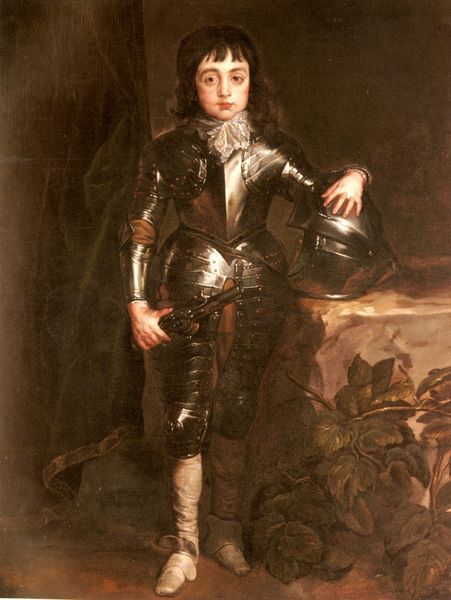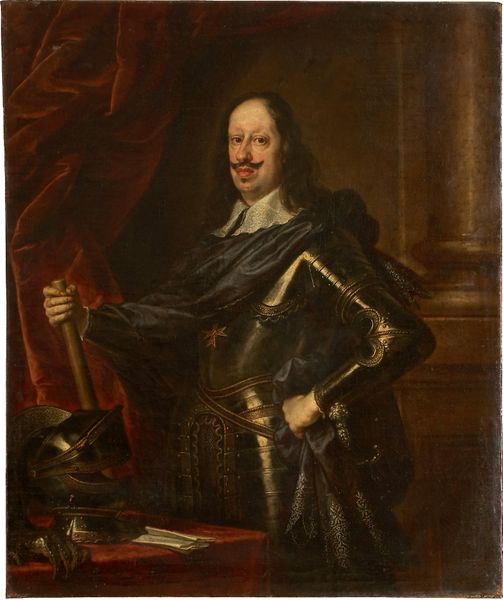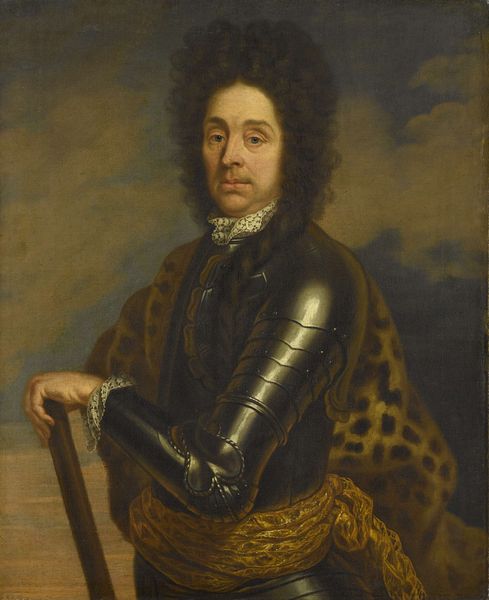
Isaac de l'Ostal de Saint-Martin (c 1629-96), Councillor of the Dutch East Indies and Commander of the Garrison at Batavia 1650 - 1702
0:00
0:00
jandebaen
Rijksmuseum
oil-paint
#
portrait
#
imaginative character sketch
#
character portrait
#
baroque
#
character art
#
oil-paint
#
figuration
#
portrait reference
#
character sketch
#
portrait head and shoulder
#
portrait drawing
#
history-painting
#
academic-art
#
portrait art
#
celebrity portrait
#
digital portrait
Dimensions: height 132 cm, width 102 cm, depth 5 cm
Copyright: Rijks Museum: Open Domain
Curator: Here we have Jan de Baen's striking portrait of Isaac de l'Ostal de Saint-Martin, a man of considerable power within the Dutch East India Company. The painting is believed to have been made sometime between 1650 and 1702 and is currently held at the Rijksmuseum. Editor: He looks burdened by the weight of that polished armor! There's a solemn stillness about him that clashes somewhat with the trappings of wealth and power on display. Curator: Indeed, the armor, usually a symbol of martial prowess, might here represent the constraints and responsibilities inherent in his position. The Dutch East India Company was a powerful entity, deeply involved in colonial exploitation and the violent control of trade routes. His participation in that demands closer examination, no? Editor: Precisely. Look at the reflective quality of the metal; it emphasizes not only the material value, but also the meticulous labor involved in crafting it. One can see in the armour the economic drivers behind the creation of the painting. It speaks of a world of craftmanship, global trade and emerging capitalism. The cloth drapes rather elegantly as well; notice how they serve as both status symbol, and testament to the textile industries! Curator: Absolutely. This wasn’t simply about commemorating an individual; it was about projecting a certain image of authority and success in a very specific historical context, in the time when The Dutch Golden Age of painting blossomed during a period of immense colonial activity and wealth accumulation that depended upon global exchange networks as well as colonial power. And what did these dynamics imply regarding Dutch participation in a market grounded in labor from enslaved individuals as well as the raw exploitation of foreign resources. Editor: He may seem a stately gentleman, however it should not lead observers to ignore this historical background! Considering how portraits often airbrush and mythologize the person, perhaps we need to deconstruct the very labor, resources and violence in the making of this man. The painting should inspire a discussion and contemplation around Dutch imperialism and the social fabric from the era. Curator: Ultimately, the portrait becomes a site where the personal and political intersect, demanding an acknowledgment of complicity, class and historical consciousness. It gives way to thinking of all those erased individuals who did not possess the privilege of having their countenances and memories preserved. Editor: It's a stark reminder that even seemingly straightforward portraits contain layers of economic activity, commodification and imperial exploitation beneath their surfaces.
Comments
No comments
Be the first to comment and join the conversation on the ultimate creative platform.
